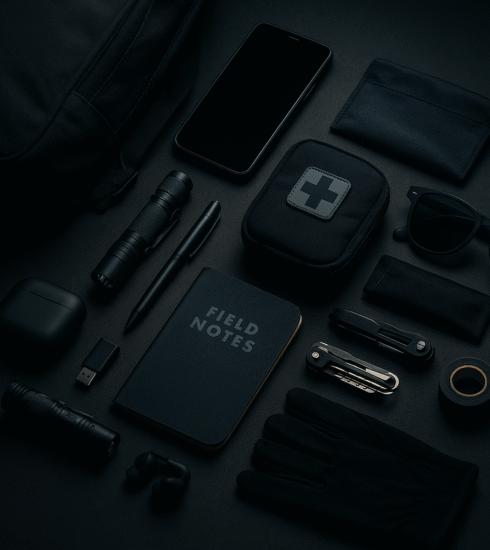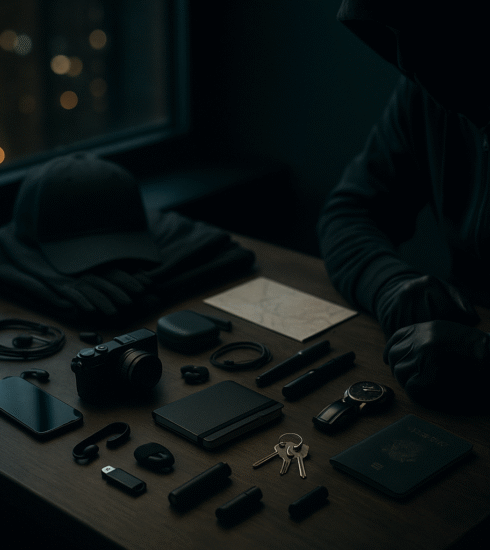Covert Operator Mindset In Daily Life
Most people view their daily routine as a series of mundane tasks, but a shift in perspective can reveal a landscape rich with information and potential. The covert operator mindset is not about paranoia or imagining threats where none exist. It is a disciplined practice of observation, analysis, and proactive planning applied to civilian life. This approach fosters a heightened state of situational awareness that allows for better decision making and risk mitigation. It turns a simple commute or a trip to the store into an exercise in mental acuity. Adopting this mindset is about cultivating a calm, alert presence that notices more and reacts more effectively. Integrating this
The greatest weapon is not a firearm or a gadget, it is a disciplined mind. Awareness is your primary tool for avoidance, and complacency is your greatest enemy. The goal is to see the world clearly, not to live in fear of it.
The Foundation of Situational Awareness
True situational awareness is a layered state of consciousness, often described by the color code system developed by Jeff Cooper. Condition white is total unawareness, being absorbed in your phone or thoughts. Condition yellow is a relaxed state of alertness, where you are simply noticing your environment without any perceived threat. This is your baseline state when in public. You are scanning, noting exits, observing people, and generally keeping your head on a swivel in a calm, effortless manner.
Condition orange is a shift to focused attention on a specific potential threat. You notice a person or a situation that seems out of place or potentially dangerous. Your mind begins to run through options. What if that person approaches me? What is my immediate move? This is not fear, it is a calculated assessment of possibilities. Condition red is action. The potential threat has manifested, and you are executing your plan. The key is to spend most of your time in condition yellow, so you can smoothly transition to orange and then red if necessary, without panicking.
This practice starts small. On your next walk, consciously pull yourself out of condition white. Look up from your phone. Notice the make and model of cars parked on the street. Identify two exits from the coffee shop before you sit down. Count the number of people in the store with you. These are simple drills that build the mental muscle of awareness. It becomes a default setting, not an exhausting effort.
Applying Principles of Observation
Observation is an active skill, not a passive state. It involves deliberately filtering the vast amount of information in your environment to find what is relevant. Look for anomalies—things that break the pattern of normalcy. This could be a vehicle that does not belong in a neighborhood, a person dressed inappropriately for the weather, or someone showing excessive interest in a person or location. An anomaly is not proof of malicious intent, but it is a reason to pay closer attention.
Listen as well as you look. So much information is conveyed through sound. The tone of a conversation, the pace of someone’s footsteps behind you, the specific sound of a car door closing. People often drown this out with headphones, effectively removing a critical sense. If you must use them in public, keep the volume low or use only one earbud. Your hearing can provide the first warning of something happening outside your field of vision, giving you precious seconds to react.
Trust your intuition, that gut feeling that something is wrong. Your subconscious mind is often processing information faster than your conscious mind can articulate it. If a situation feels off, it usually is. You do not need to know why immediately. The professional response is to create distance. Move away from the feeling. You can always analyze the reason later from a position of safety. Never feel obligated to be polite at the expense of your security.
Your personal vehicle is a operational platform. Always keep the fuel tank above half full. Know how to perform a quick J-turn and ram your way out of a blocked road. Park facing the exit for a faster departure and never sit in a parked car unaware of your surroundings.
Operational Planning for Daily Routines
Every movement outside your home can be thought of as a small mission. This begins with a brief. Before you leave, know your route, your destination, and your alternate routes. Check traffic and weather conditions. Have a plan for what you will do if your primary vehicle breaks down. This pre planning takes minutes but drastically reduces uncertainty and stress later. It puts you in control of the event before it even begins.
Your attire is part of your kit. Dress in a manner that allows for freedom of movement. This does not mean wearing tactical clothing to the supermarket, but avoiding overly restrictive outfits that would prevent you from moving quickly or defending yourself if absolutely necessary. Your footwear is critical. Can you run in it? This simple consideration is often overlooked until it is too late. Function should subtly inform fashion for the prepared individual.
Maintain a baseline level of everyday carry items. At a minimum, this includes a reliable flashlight, a way to create fire, a small medical kit, and a communication device. A powerful flashlight can disorient a threat, help you signal for help, or illuminate a dark area. A medical kit, even a small one with a tourniquet and hemostatic gauze, can stop life threatening bleeding for yourself or others. These are tools for solving problems, not for seeking them out.
Managing Your Digital Footprint
Your online presence is part of your daily life footprint. Operational security extends to your social media habits. Avoid posting in real time; waiting to share vacation photos until after you have returned home is a basic but effective practice. Be mindful of the metadata attached to your photos, which can reveal your location. Review your privacy settings regularly on all platforms to control who sees your information.
Practice good digital communication hygiene. Be cautious of what you share over text message or email, especially regarding travel plans or sensitive information. Assume that any digital communication could be seen by others. Use encrypted messaging apps for more sensitive conversations. This is not about having something to hide, but about maintaining control over your personal information.
Be aware of the information you casually surrender. Loyalty programs at grocery stores, free Wi Fi networks, and smartphone apps all collect data on your habits, movements, and preferences. While it is difficult to opt out completely, being conscious of this data collection allows you to make informed choices about what services you use and what information you provide. Think of your personal data as an asset to be protected.
Building Resilience and Adaptability
The operator mindset embraces discomfort as a training tool. Take a different route to work occasionally. Shop at a different grocery store. Sit with your back to the wall in a restaurant until it becomes second nature. These small disruptions prevent you from becoming a creature of strict habit, which makes you predictable. Predictability is a vulnerability. Introducing small, controlled variables into your life builds mental flexibility.
Learn basic skills that foster self reliance. Knowing how to perform basic vehicle maintenance, how to administer first aid, or how to navigate without a GPS are all empowering abilities. They reduce your dependence on systems that can fail. This knowledge builds confidence, and a confident person carries themselves differently. They are less likely to be targeted because they project capability.
Physical fitness is a non negotiable component of resilience. You do not need to be an athlete, but you should possess a baseline level of strength and cardiovascular health. The ability to move your body effectively, to run if necessary, or to help someone else is fundamental. Stress affects a unfit body more severely than a fit one. Physical readiness supports mental readiness.
The Balance Between Alertness and Paranoia
The ultimate goal is to achieve a state of calm alertness, not hypervigilant anxiety. Paranoia is exhausting and counterproductive; it sees threats in every shadow and leads to irrational decisions. The professional mindset is analytical, not emotional. It assesses probabilities, not possibilities. The likelihood of most serious threats is low, but the consequence is high, so you prepare accordingly without dwelling on it.
This mindset should be a seamless part of your life, not a performance. It does not involve staring people down or acting aggressively. In fact, the most aware individuals are often the most polite and calm because they are in control of themselves and their environment. They de escalate situations with their demeanor. Their awareness is internal, a quiet confidence that comes from knowing they have paid attention and have a plan.
Know when to switch off. The mindset is a tool for public and unfamiliar spaces. It is not necessary to maintain condition yellow in your own living room. Being able to relax completely in a secure environment is vital for mental health and sustainability. The discipline lies in knowing when to engage your awareness and when it is safe to disengage and recharge.
Adopting this mindset transforms daily life from a passive experience into an active practice. You become a participant in your own security rather than a potential victim of circumstance. Start with one simple habit today, perhaps noting the exits everywhere you go. This small step is the beginning of a more engaged, prepared, and confident way of moving through the world.





